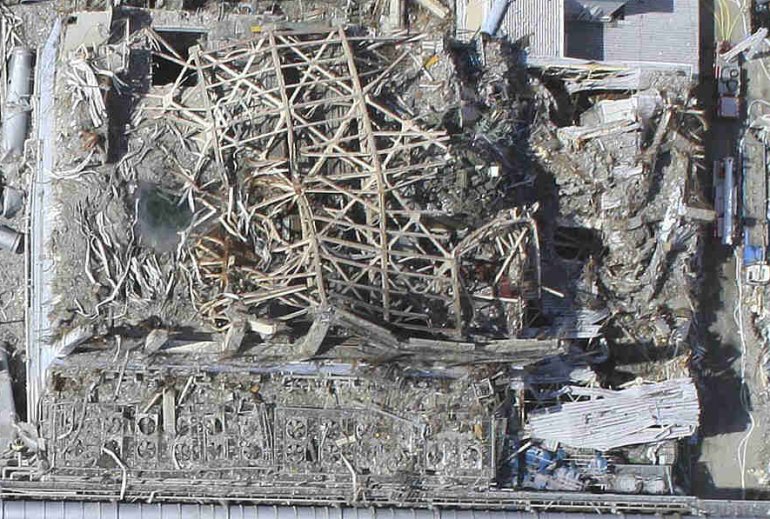On March 11, 2011 an earthquake and tsunami severely damaged four nuclear reactors at the Fukushima Number 1 power plant on the northeast coast of the Japanese island of Honshu.
The Unit Three reactor is a boiling water design fueled with both uranium dioxide zirconium alloy fuel rods and mixed uranium and plutonium oxide zirconium alloy fuel rods in zirconium alloy fuel rods. A solution of plutonium dioxide in water has a high boiling point and is not as prone to release into the environment during loss of coolant and steam venting. The primary concrete containment vessel surrounds the core of the reactor and the secondary concrete containment vessel included upper levels which contained pools for storing fuel rods and irradiated equipment.
Around 3 PM Unit 3 was shut down in response to the earthquake. Around 5:30 PM all the electrical power generated by the reactor stopped with the arrival of the tsunami. Emergency batteries took over to provide power for monitoring and control systems and the coolant level was kep stable. When the water level began to drop again, the isolation cooling system and core sprayers were shut down and the high pressure coolant injection system was started. The injection systems failed on March 13th and could not be restarted. For a period of time, the top nine feed to the mixed uranium and plutonium oxide fuel rods were uncovered and radiation levels increased in the reactor building.
Around 9 AM on March 13, steam was manually vented from the primary containment vessel and operators began using a fire truck to pump sea water mixed with boric acid into the reactor core but a malfunctioning gauge led to confusion about the actual level of water in the reactor. Around noon on March 13th, a government spokesman reported that hydrogen gas was building up in the Unit 3 primary containment vessel. At noon on March 14th the hydrogen gas was ignited and an explosion blew out the upper level walls of the Unit 3 reactor building. Eleven people were killed by the explosion and others were injured.
There was concern that the Unit 3 fuel assembly could reach criticality and a self sustaining fission reaction would lead to massive releases of radioactive materials. Later analysis would show that criticality was never reached.
On March 16th white plumes were seen rising from the Unit 3 reactor building. These plumes were assumed to be steam generated from water boiling off fuel rods stored in a pool at the top of the building. Helicopters were dispatched to dump cooling water on the top of the Unit 3 reactor but the mission was cancelled due to the high level of radioactivity. In August, the existing undamaged coolant injection system at Unit 3 was restarted. There were still problems with high temperatures in the upper levels of the containment building.
Helicopters dropped loads of water on Unit 3 on March 17th. Fire engines sprayed sea water on Unit 3 for the next week to cool the reactor. On March 25th, fresh water replaced sea water in the spraying operation. There was a report on that date that the containment vessel at Unit 3 might have been breached and that radiation may have been released into the environment.
It was estimated in April that thirty percent of the fuel rods had been damaged. In May it was reported that water sprayed into Unit 3 had been leaking back into the environment. In late June, it was revealed that chemical reactions in the injected water had become highly alkaline and was threatening to corrode the aluminum racks holding the fuel rods. This might have resulted in criticality, a self-sustaining fission reaction. By late September the cooling efforts successfully lowered the temperature in most of Unit 3 to under 100 degrees Celsius.
